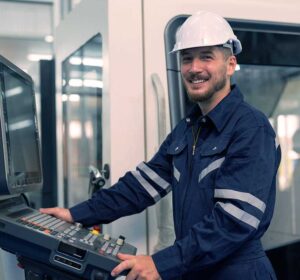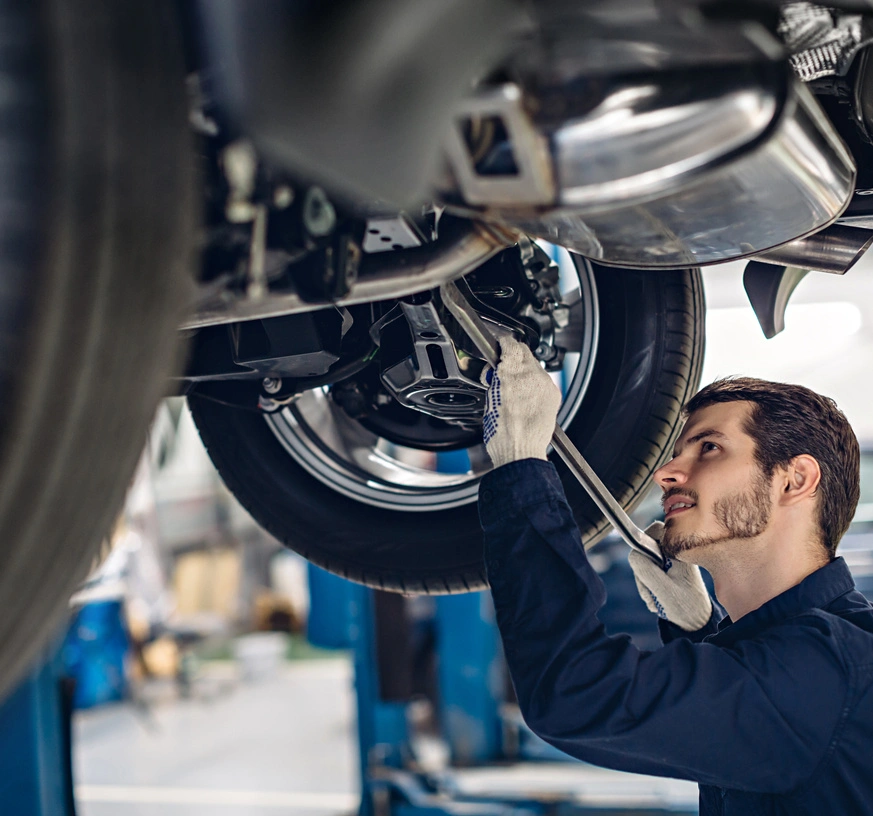The restaurant industry is highly competitive, and the rising costs of restaurant equipment can have a huge impact on a new or growing business. According to The National Restaurant Association, “about 60% of restaurants fail in their first year of operation, and 80% fail within 5 years of opening.” So those high-quality ovens, refrigerators, and other essential items that require substantial investments can really strain your finances.
Equipment financing is a practical solution, allowing you to spread out the cost over time and preserve your working capital. If you utilize loans or leases, you can equip that dream restaurant without breaking the bank and keep funds available for other expenses. This article will explore various financing options, their benefits, and how to qualify for them, so that you can grow your restaurant into a huge success.
The Benefits of Financing Your Restaurant Equipment
Financing restaurant equipment comes with several advantages:
- Improved Cash Flow: By financing equipment, you can preserve working capital for essential operational expenses like ingredients, payroll, and marketing.
- Lower Upfront Costs: Financing allows you to spread out the equipment cost over time, making it easier to open your doors or upgrade your kitchen without a massive initial investment.
- Potential Tax Benefits: Interest payments on some loans may be tax-deductible, reducing your taxable income (consult a tax advisor for specific advice).
- Build Business Credit: Making timely loan payments helps establish a strong credit history, which is beneficial for securing future financing.
- Flexible Payment Options: Financing provides the flexibility to choose a payment term that aligns with your budget and repayment capabilities, allowing better financial planning and management.
What kind of equipment can you finance?
You can finance a wide range of restaurant equipment for various kitchen operations. Examples include:
- Ovens for baking and roasting.
- Refrigerators and freezers for storing ingredients and perishables.
- Dishwashers to maintain hygiene and cleanliness.
- Mixers for dough and batter preparation.
- Grills for cooking meats and vegetables.
- Slicers for preparing meats and cheeses.
This flexibility in financing ensures that you can acquire all the necessary equipment to run a fully functional restaurant.
How Does Restaurant Equipment Financing Work?
Restaurant equipment financing allows businesses to get essential equipment without the large upfront cost. The basic concept involves borrowing money or leasing equipment, so you can spread the payments over time. There are two main options:
- Loans: With equipment loans, you borrow money to purchase the equipment outright. After repaying the loan, you own the equipment. This option is for those who want long-term ownership and potential tax benefits from interest deductions and depreciation.
- Leases: Equipment leasing involves renting the equipment for a specified term. At the end of the lease, you may have the option to purchase the equipment. Leasing generally offers lower monthly payments and flexibility, making it easier to upgrade to newer equipment as technology advances.
Both options provide flexibility in managing your finances and keeping your restaurant well-equipped.
Traditional Banks
Traditional banks are established lenders that offer competitive interest rates and long-term financing options. However, they typically have stricter qualification requirements, such as a strong credit history and extensive financial documentation. While the approval process may be slower, the stability and reliability of bank financing can be beneficial for many businesses.
Alternative Lenders
Alternative lenders, often found online, provide a faster application process and potentially less-stringent requirements compared to traditional banks. These lenders are ideal for businesses needing quick access to funds or those with less-than-perfect credit. However, the interest rates and fees may be higher, so compare terms carefully.
Financing Options For Restaurant Equipment
Traditional Term Loan
A traditional term loan provides a lump sum that you repay over a set term with fixed monthly payments. The pros are predictable payments, it builds equity, and you receive ownership at the end. The cons are that it requires a strong credit history and may involve higher monthly payments compared to leases.
This option is ideal for businesses that prefer ownership and can handle consistent repayment schedules.
SBA 7(a) Loan
An SBA 7(a) loan is guaranteed by the Small Business Administration, offering competitive rates and longer repayment terms. The pros are generally lower interest rates, longer terms, and less risk for lenders due to SBA backing. The cons are that it takes extensive paperwork, has longer approval times, and stringent eligibility requirements.
This loan is suitable for businesses needing substantial funding with favorable terms.
Business Line of Credit
A business line of credit provides flexible access to funds as needed, similar to a credit card. The pros are that you only pay interest on the amount used, receive flexible funding, and have reusable credit. The cons are that they have variable interest rates and there are potential fees for unused credit.
This option is beneficial for managing cash flow and funding ongoing expenses or small equipment purchases.
Equipment Loans
Equipment loans specifically finance the purchase of restaurant equipment, spreading the cost over time. The pros are that you receive ownership after repayment, get potential tax benefits, and have fixed payments. The cons are that it typically requires a down payment and good credit, and the equipment serves as collateral.
These are ideal for businesses that want to own their equipment and can meet the lender’s requirements.
Equipment Leasing
Equipment leasing involves renting equipment with an option to purchase at the end of the lease term. The pros are that you receive lower monthly payments, easier qualification, and the flexibility to upgrade. The cons are that you have no ownership until the lease ends, potentially higher overall costs, and penalties for early termination.
Leasing is suitable for businesses needing lower initial costs and flexibility to upgrade equipment regularly.
Is it Better to Finance or Lease Restaurant Equipment?
Deciding whether to finance or lease restaurant equipment depends on your personal preference and financial situation. Financing allows for ownership after repayment and potential tax benefits but requires higher monthly payments and a down payment. Leasing offers lower monthly payments and greater flexibility but does not provide ownership and may result in higher long-term costs.
Financing Restaurant Equipment Pros & Cons
- Pros: Financing allows you to own the equipment after repayment, providing long-term value. It also offers potential tax benefits, such as deductions for interest payments and depreciation. Additionally, financing options often come with flexible payment terms that can be tailored to your business’s cash flow.
- Cons: Financing typically requires a higher upfront investment, including a down payment. Qualification requirements may be stricter, necessitating good credit and extensive financial documentation. This option may also involve higher monthly payments compared to leasing, impacting short-term cash flow.
Restaurant Equipment Leasing Pros & Cons
- Pros: Leasing restaurant equipment often results in lower monthly payments, making it easier to manage cash flow. It may be easier to qualify for a lease compared to a loan, especially for businesses with less-established credit. Leasing also frees up working capital for other business needs and allows for regular equipment upgrades.
- Cons: Leasing does not provide ownership of the equipment at the end of the lease term unless a purchase option is included. Over the long term, leasing can be more expensive than financing due to continuous payments. Additionally, leases may come with restrictions and penalties for early termination or excessive wear and tear.
How Do You Qualify for Restaurant Equipment Financing?
Qualifying for restaurant equipment financing involves meeting several key criteria:
- Good Personal and Business Credit Scores: Lenders look at both personal and business credit scores to assess your ability to repay debt. A strong credit history increases your chances of approval and may secure better interest rates.
- Strong Business Plan: A well-detailed business plan is the first step. It should outline your restaurant concept, financial projections, and specific equipment needs. This demonstrates to lenders that you have a clear vision and strategy for your business.
- Time in Business: Established businesses with a proven track record are generally viewed more favorably by lenders. However, newer businesses can still qualify if they present strong financials and a solid business plan.
- Financial Statements: Providing detailed financial statements, such as profit/loss statements and balance sheets, offers transparency into your business’s financial health. These documents help lenders evaluate your financial stability and repayment capacity.
Meeting these qualifications can enhance your chances of securing financing to equip your restaurant and support its growth.
How to Apply for Restaurant Equipment Financing
Applying for restaurant equipment financing involves several steps to secure the best terms and conditions for your business:
- Determine the Financing Amount You Need and How Much You Can Afford to Repay: Start by identifying the specific equipment you need and its total cost. Then, assess your business’s cash flow to determine how much you can afford to repay each month without straining your finances. This step is needed for setting realistic expectations and avoiding overextending your budget.
- Choose the Type of Equipment Financing Option Right for Your Restaurant: Decide whether a loan or lease is more suitable for your needs. Consider factors such as ownership, monthly payments, flexibility, and tax implications. Loans provide long-term ownership, while leases offer lower monthly payments and easier qualification but do not confer ownership unless you opt to purchase at the end of the lease term.
- Research and Compare Lenders Based on Rates, Terms, and Eligibility Requirements: Investigate various lenders, including traditional banks, credit unions, online lenders, and equipment finance companies. Compare their interest rates, repayment terms, fees, and eligibility criteria. Reading customer reviews and seeking recommendations can also help you identify reputable lenders.
- Prepare a Strong Application Package with Your Business Plan, Financials, and Credit Score: Gather all necessary documentation, including a detailed business plan, financial statements (profit/loss statements, balance sheets), tax returns, and credit reports. A comprehensive and well-organized application package demonstrates your preparedness and financial stability, increasing your chances of approval.
- Submit Applications to Multiple Lenders to Increase Your Chances of Approval: Apply to several lenders to compare offers and secure the best terms. Submitting multiple applications increases the likelihood of approval and gives you leverage to negotiate better rates and conditions. Be mindful of each lender’s application process and requirements to ensure your submissions are complete and accurate.
Following these steps can help you successfully go through the application process and obtain the financing to equip your restaurant.
Restaurant Equipment Financing FAQs
Can You Finance Restaurant Equipment with Bad Credit?
Yes, it is possible to finance restaurant equipment with bad credit, but options may be limited. Lenders may offer loans at higher interest rates to compensate for the increased risk or require a co-signer with good credit to guarantee the loan.
Can Startups Finance Restaurant Equipment?
Yes, startups can finance restaurant equipment, though lenders may prefer a strong business plan and a solid financial guarantor. Demonstrating a clear strategy and financial projections can improve the chances of securing financing despite the lack of an established business history.
How to Get Tax Benefits Using Section 179 Deduction?
The Section 179 Deduction allows businesses to deduct the full purchase price of qualifying equipment purchased or financed during the tax year. This deduction can be applied to new and used equipment, significantly reducing taxable income. By taking advantage of Section 179, businesses can improve cash flow and reinvest savings into their operations. Consult a tax advisor to ensure your equipment qualifies and to maximize your tax benefits.
About the Author
Pretha Yasmin
Pretha Yasmin is the consumer analyst for SmallBusinessLoans. She has more than five years of experience in marketing and studying consumer behavior for a wide range of industries including finance, construction, and hospitality. She holds a Bachelor of Business Administration in marketing from Brooklyn College.

















